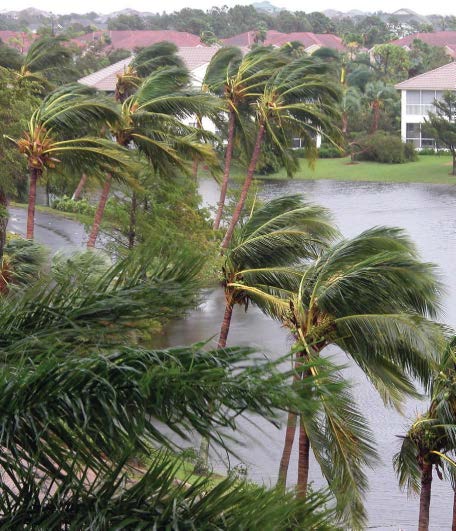glacial ice. Far up north, lighter-weight, cool, fresh meltwater enters the ocean and slows the Stream, causing sea levels to rise. Short-term slowing of the Stream has serious consequences in Florida. The temporary slowdowns can add between 1 and 3 feet to tides over a day or a week. More extreme Gulf Stream flooding can occur if there is also heavy rainfall that coincides with a high tide.
6. Along both coasts of Florida and the Gulf, hurricanes, with their violent sea surges, add another dimension. Super storms such as Katrina in Louisiana and Harvey in Texas barrel ashore into low-lying or even below–sea level areas with destructive winds and fast-rising sea surges, temporarily raising coastal sea levels several feet above even the highest tides.
7. Weather—but not simply precipitation— is also a factor in sea level rise. Scientists study the effects of global weather systems such as warm-water El Niño, which can raise sea levels for months at a time. Weather's most vulnerable target may be California, where over 25 million people are at risk. Sea levels in San Francisco Bay are now rising by about 1 inch every 10 years— much faster than in 1950, when the rate was basically stable. Adding to the threat, winter storms can elevate high tides as much as a foot. If the current accelerating rate of sea level rise continues, two-thirds of California's beaches will disappear by the year 2100. Warming tem peratures contribute to subsidence. As summers become hotter, wetlands become drier, the soil dries out and loses its density, and the land sinks.

Photo: ArtBoyMB/Getty Images
Along both coasts of Florida and the Gulf, hurricanes, with their violent sea surges, add another dimension.
We face a vulnerable future, partly because there are so many of us. Coastal Canadian and U.S. populations have risen to millions over the past 2,000 years. Almost 40 percent of the U.S. population lives in coastal areas that are prone to flooding shore